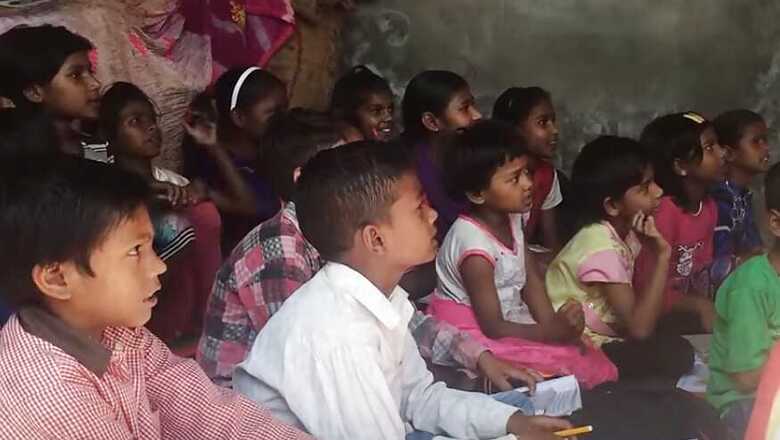
views
Saharanpur: "Baba Saheb ne humein sikhaya hai ki jo qaum apna itihaas nahi jaanti, who kabhi tarakki nahi kar sakti (Bab Saheb has taught us that a community that doesn't know its own history can never progress)," says Kamal Singh Walia, district president of the Bhim Army, as he leads the way to the Ravidas Temple at Hauzkhedi village in Saharanpur district.
"There is a big difference between the Dalits of the 20th Century and the Dalit children we are training to dominate in the 21st Century. For years, the confidence of Dalits has been shattered. They have been told that they are less than everyone else. But we are raising children who hold no fear in their hearts," he says.
At the Ravidas Temple, a community area for the village's Dalit residents, a 25-year-old graduate is helping children of all ages with their homework. This is a 'Bhim Pathshala', one of over 1,000 that are being run by the Bhim Army all over Uttar Pradesh.
It was the need to know their own history, which Walia talks about, and the glaring lack of facilities in government schools that gave birth to these Bhim Pathshalas in 2015. Now, for two hours a day, after school hours, Dalit children of all ages from across Western Uttar Pradesh gather under the shade of a tree or the courtyard of a Ravidas Temple or sometimes, even the house of a Bhim Army operative to learn.
"It costs around Rs 3,000 a month to run a Bhim Pathshala since we need money for stationery. The teachers who come here don't charge any money. Every Bhim Army member is expected to help out the Bhim Pathshalas in any way that they can. Those who are graduates or post graduates are expected to take out two hours in a day and teach children. Others can contribute whatever money they can spare. Some people give us Rs 50 a month, others give around Rs 200 or Rs 300. But everyone contributes in their own way," Walia says.
Sarita Ambedkar, a 25-year-old post-graduate, teaches children from 3:30 pm to 5:30 pm every day at her native village of Hauzkhedi. For children of manual labourers, she says, the Bhim Pathshala is invaluable.
"The school and parents are the two pillars of education that make a good student. In the case of many Dalit children in UP, neither pillar is strong. The condition of government schools in UP is deplorable, since half the teachers don't even want to teach. All they ensure is that kids receive the khichdi in the mid-day meal. To add to this, parents of these children are uneducated so they can't even check if their child is receiving a proper education. Bhim Pathshalas fills these gaps. We are a bridge between home and school. Dalit children have been devoid of education for centuries. We plan to change that," she says.
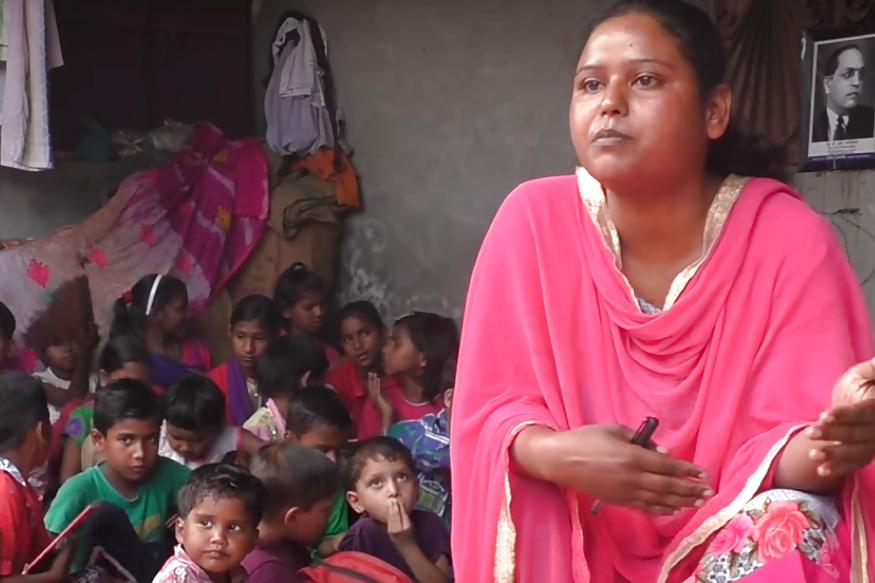
Twenty-five-year-old Sarita Ambedkar, who teaches children from 3:30 pm to 5:30 pm every day at Bhim Pathshala in Hauzkhedi, says the school is invaluable for children of manual labourers. (Photo: News 18)
Bhim Army and its founder Chandrashekhar shot to national prominence last year after a caste conflict broke out in Saharanpur. The Bhim Army, in protest against alleged atrocities on Dalits, had called for a Mahapanchayat in Saharanpur on May 9, 2017. While the police denied permission for the public meeting, invitations had already gone out on social media. Hundreds had started making their way to the venue of the meeting when things turned sour. Supporters of the Bhim Army clashed with the police, following which, Chandrashekhar was booked by the police.
A month later, he was arrested by a team of UP Police in Himachal Pradesh’s Dalhousie. Chandrashekhar was booked by the UP Government under the stringent National Security Act (NSA) and has been lodged in jail ever since.
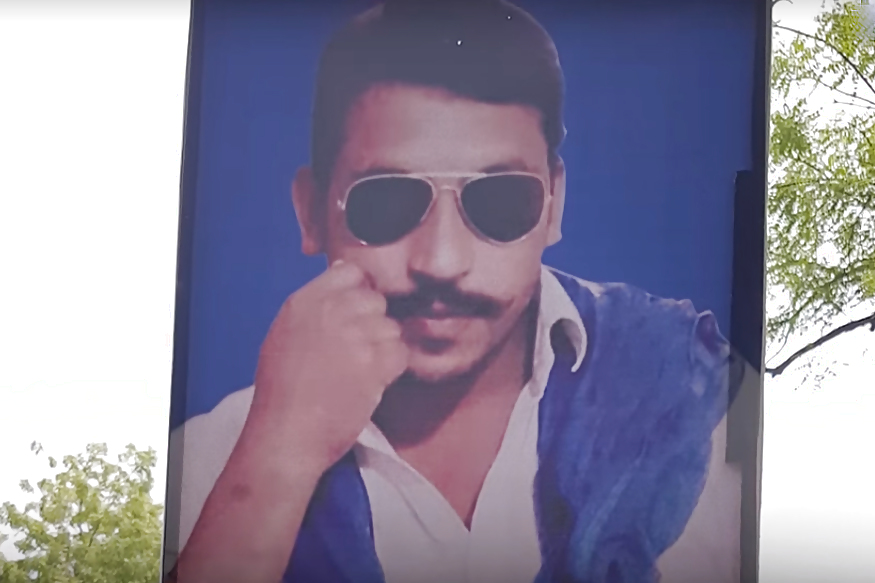
Bhim Army and its founder Chandrashekhar shot to national prominence last year after a caste conflict broke out in Saharanpur. (Photo: News 18)
Walia spent eight months in jail with Chandrashekhar and claims he developed a limp while there. "A gift", he jokes, "from the Yogi Government."
Following the Saharanpur riots, most of the Bhim Army top leadership was either absconding or in prison. Even during this time, says Walia, the Bhim Pathshalas continued to function.
"Before Chandrashekhar and I went underground, we had passed instructions to some of our young boys and girls who did not have cases against them – make sure that the Pathshalas continue. The classes are not just some social work that we are doing. It is at the core of Bhim Army's entire ideology. Had Baba Saheb not fought to get himself educated, he would not be the Great Liberator of Dalits. If he could do it in the 20th Century, there is no reason why we shouldn't do it in the 21st," he says.
Sarita Ambedkar describes Bhim Pathshalas as "less than a school, more than just a tuition class". On a warm April afternoon, Sarita starts the class by going through what each child was taught in school that day. The focus is to get their homework finished on time. But as the lesson moves on, it is clear that there is a political undertone to this class.
"Most of the lesson focuses on what they learn in school. But we also focus on telling Dalit kids about their own history. They learn about Baba Saheb, Jyotiba Phule, Savitribai Phule and Sant Valmiki Ji. There is very little mention of these people and their lives in mainstream education."
With this, she says, she is preparing a new generation of Dalits – a more confident, unafraid and unapologetic generation of Dalits.
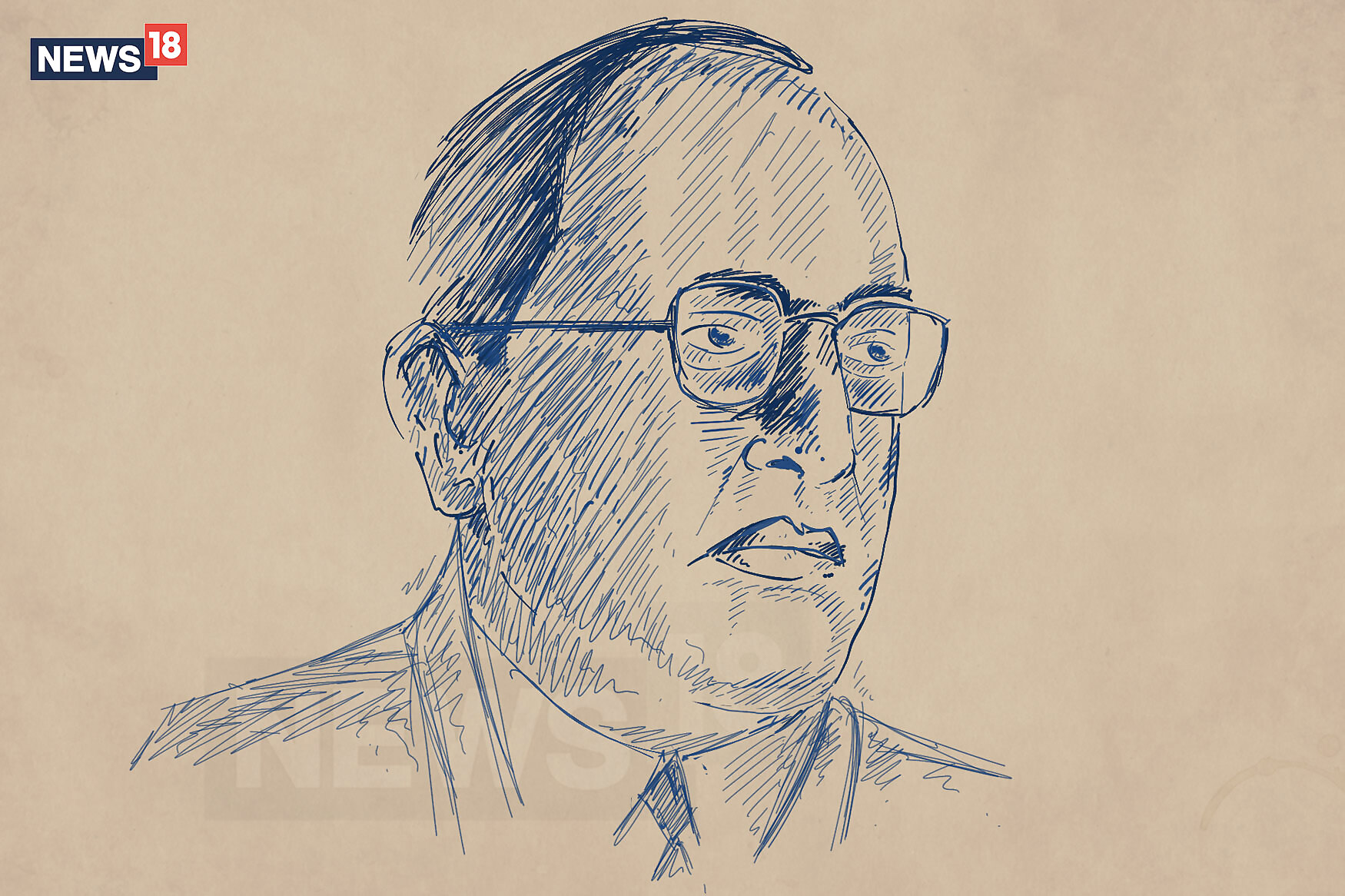
Dr. B R Ambedkar was popularly known as Babasaheb Ambedkar. (News18 Creative)
"To this day, my students tell me that teachers discriminate against Dalit and Muslim kids. The children of Brahmins are given the first row, followed by Jats and Gujjars. Dalit and Muslim kids are seated at the back. They have to wait till the upper caste kids are done drinking from the school's handpump. This crushes the morale of a young Dalit. But when they come to my class, I make sure that I build their confidence again by telling them that great men and women come from their community too."
Gender sensitisation, too, is an important part of the curriculum. "We encourage boys and girls to learn to talk to each other and treat each other with respect. We even encourage some of the older students to read," she says as he flourishes a book called "Nari Kranti par Lenin ke vichaar" (Lenin's views on the feminist revolution).
It was the assertion of the Dalit identity and the need to redefine what it means to be Dalit that gave birth to the Bhim Army in 2015. This idea also percolates down to the Bhim Pathshalas. Vinay Ratan Singh, the National President of the Bhim Army, said, "In 2015, our founder Chandrashekhar Azad Raavan erected a board outside his native village Ghadkauli that said 'The Great Chamar Dr. Bhimrao Ambedkar Gram'. Thakurs objected to the board and said Chamars, a caste of Dalits, cannot be great."
Pradeep Narwal, a JNU research scholar and associate of the Bhim Army said, "The word 'Chamar' was used as a slur. Bhim Army's fight is to reclaim not just the word Chamar but all symbols associated with Dalit identity and turn them into Dalit pride."
Over the last year, as the Bhim Army grabbed national headlines, the number of Bhim Pathshalas has skyrocketed.
"Earlier, we were running a total of 350 Pathshalas in just two districts – Saharanpur and Haridwar. Today, a year since the 2017 riots, we are running over 1,000 Pathshalas across UP. The next step is to expand to other states. Really, I must thank Modi and Yogi. Thanks to their atrocities on our workers, Bhim Army has now become a household name."
While Bhim Army says its fight is mainly against an ideology of 'Manuwaad' and 'Hindutva', in their growth model, they are beginning to resemble their most bitter enemy – the Rashtriya Swayamsewak Sangh. A Bhim Army leader said, "RSS started around 90 years ago as a social movement. They started holding shakas and Saraswati Shishu Mandir schools. Today, they are ruling over the country. One day, the children of Bhim will run this country."
Political messaging, subtly inserted into greetings, is an important part of the Pathshalas. As Kamal Walia enters the Bhim Pathshala, children greet him with chants of 'Jai Bhim'. When four-year-old Varsha Ambedkar is asked to recite 'Baba Black Sheep', she begins by first saying, "Jai Bhim, Jai Bhim Army, Bhim Army Zindabad, Advocate Chandrashekhar Azad Zindabad! (Hail Bhim, Hail Bhim Army, Long Love Bhim Army, Long Live Advocate Chandrashekhar Azad!"
If the aim is to create the next generation of Bhim Army activists, the movement is already showing signs of success. When asked what she wants to be when she grows up, 15-year-old Shilpi says, "When I went to school, my teachers treated my normally at first. However, the attitudes of some of them changed after they found out I was a Dalit. The Bhim Pathshala taught me that I was not less than anybody. That is why I want to join the Bhim Army and become a teacher at the Bhim Pathshala."














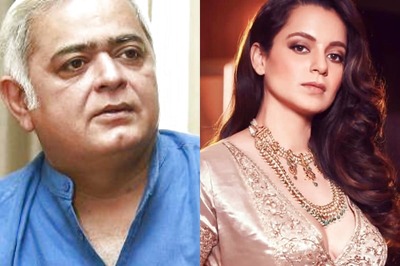
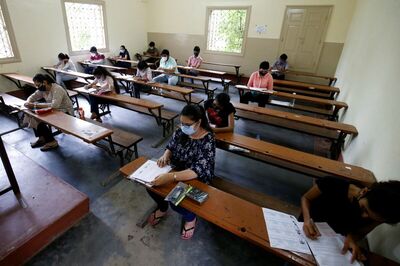




Comments
0 comment